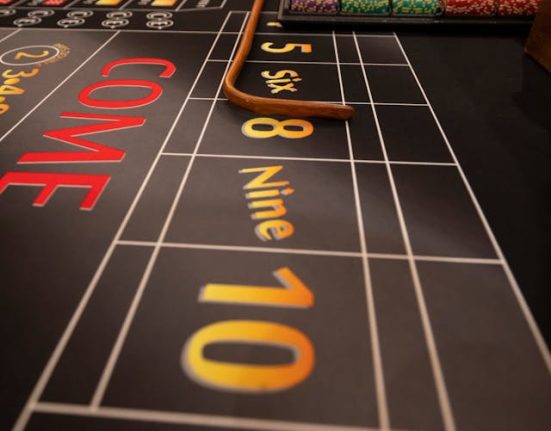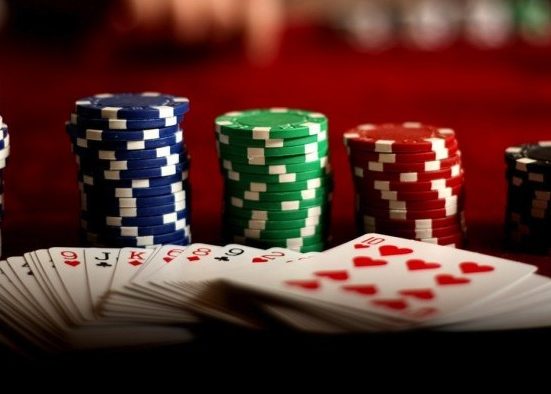Online casino players know that these bonuses can be found at many. While “Free-load” may seem appealing, they are not worth the effort. Are they lucrative for gamblers? This question is dependent on many factors. This question can be answered with mathematics.
Let’s start with an average bonus on deposit. You transfer $100 and get $100 more. This will be possible after you stake $3000. This is an example of a bonus on your first deposit. Although the deposit and bonus size may vary, so can the stake rates. However, one thing is sure: the bonus amount can still be withdrawn after the wagering requirement. As a rule, it is not possible to draw any money.
This bonus can be considered free if you play at the casino online for an extended period and are persistent. If you play slots with 95% payouts, a bonus will allow you to make, on average extra 2000 $ of stakes ($100/(1-0,95)=$2000); after that, the bonus amount will be over. There are some complications. For example, if your goal is to look at the casino without spending a lot of time there, or if you like roulette or other games prohibited by bonus rules, you might be denied access to the bonus amount. Most casinos won’t allow you to withdraw money if you don’t wager on the permitted games. You can win a bonus by playing blackjack or roulette, but only if you make the required 3000 stakes. In the 95% of payouts, you’ll lose an average of $3000* (1-0,95) = $150. You lose $50 and also forfeit the bonus. In this instance, it is better not to accept the prize. If blackjack or poker can win back the tip with a casino profit of 0.5%, it is possible to expect you to get $100-3000*0,005=$85 after winning back your premium.
Sticky or phantom bonuses:
Casinos are becoming more popular for “sticky” and “phantom bonuses. These bonuses are the equivalent of lucky chips in a real casino. It is not possible to withdraw the bonus amount. The bonus must be kept on the account as if it “has stuck.” Such a bonus may not be worth the effort. You won’t be able to withdraw any money, but this is different. The bonus is not worth it if you win. However, if you lose, it might be useful. You have already lost $100 without a bonus. Even if the bonus is not “sticky,” $100 will still be on your account. This can help you to warm out of this situation. The chance of winning back the bonus is less than half (for this, you will only need to stake the full amount in roulette). To maximize profits from “sticky” bonuses, one needs to use the strategy “play-an-all-or-nothing game.” You will lose slowly and surely if you stake small amounts. The negative math expectancy of games means you won’t win any bonus. Clever gamblers usually try to realize their bonuses quickly – somebody stakes the entire amount on chances in the hope of doubling it (imagine, you stake all $200 on chances, with a probability of 49% you’ll win a neat $200, with a probability of 51% you’ll lose your $100 and $100 of the bonus, that is to say, a stake has positive math expectancy for you $200*0,49-$100*0,51=$47), some people use progressive strategies of Martingale type. You should set the amount you want to gain, such as $200, and take risks to win it. If you have contributed a deposit of $100, obtained “sticky” $150, and plan to enlarge the sum on your account up to $500 (that is to win $250). The probability of achieving your aim is (100+150)/500=50%, at this the desired real value of the bonus for you is (100+150)/500*(500-150)-100=$75 (you can substitute it for your figures, but please, take into account that the formulas are given for games with zero math expectancy, in real games the results will be lower).
Cash back Bonus:
A bonus that is rarely seen is the return on loss. Two types of rewards can be distinguished: the total return of the deposit. At this point, the money is usually to be won back just like an ordinary bonus. Or a partial recovery (10-25%) over a fixed period (a week or a month). The first scenario is almost identical to a “sticky bonus” – the bonus is useless if you win but helps if you lose. The “sticky bonus” math calculation will also be analogous. The game’s strategy is the same – we gamble and win as often as possible. We can still play with the money we’ve earned, even if we don’t win Online New Africa Casino. Casinos in games can offer a partial return on losing for active gamblers. On average, you will lose $50 if you play blackjack with a math expectancy of 0.5%. You will receive $10 back if you lose $20. This is equal to the math expectancy increase of 0.4%. You can still benefit from the bonus, but you will need to pay less. We make one on the same stakes as roulette, but it is a significant stake. We win $100 in 49% of cases, while $100 is won in 51%. However, we lose $100 in 51% of the cases. At the end of each month, we get back 20%, which is $20. As a result, the effect is $100*0,49-($100-$20)*0,51=$8,2. The stake has a positive math expectancy. However, dispersion is significant, and we will only be able to play this way once weekly or monthly.
Allow me to make a brief remark. I am slightly off-topic. One of the forum members claimed that the tournaments weren’t fair. He said, “No normal person will ever stake a single stake in the last 10 minutes.” This 3,5-fold exceeds the prize amount ($100), which is in nominating a maximum loss so as not to lose. What’s the point?
It makes sense. This situation is similar to the one with a return on losing. We are in the black if a stake has been won. We’ll receive a tournament prize of $100 if it fails. So, the math expectancy of the abovementioned stake amounting to $350 is $350*0,49-($350-$100)*0,51=$44. Yes, we might lose $250 today but win $350 tomorrow. Over a year of playing daily, our total earnings will be pretty impressive at 365*$44=$16 000. We’ll see that stakes of up to $1900 can be profitable for us after solving a simple equation. We need thousands on our accounts for this game, but we can only blame the casinos for being dishonest or foolish.
Let’s get back to our bonuses. These are the highest “free-loading” bonuses without any deposit. One has noticed more and more ads promising $500 free of cost, with no warranty. You get $500 for a particular account and a limited time to play (typically an hour). You will only get the amount of your win after an hour, but at most, $500. You must win the bonus back on a real account. Usually, you have run it 20 times in slot machines. It sounds great, but what’s the actual cost of the bonus? The first part is that you must win $500. Using a simplified formula, we can see that the probability of winning $500 is 50%. However, in practice, it is much lower. To win the bonus, you must stake $10 000 on slots. The payout rates in slot machines have yet to be discovered. They average around 95% and fluctuate between 90-98% for different types. An average slot will give us $500-10 000*0.05=$0. That’s a reasonable amount. We can expect $500-10 000*0.02=$300 if we’re lucky enough to find a high-paying slot. The probability of choosing a place with high payouts is 50%. However, you have heard the opinions of other gamblers, as this probably will be at most 10-20 %. In this instance, the generous deposit bonus of $300*0.5*0.5=$75. Although it is less than $500, this is still a good amount. However, we can see that the bonus’s final value has dropped sevenfold, even with the best possible assumptions.
This exploration into the mathematics realm of bonuses will prove helpful to gamblers. If you want to win, you must think and do calculations.







